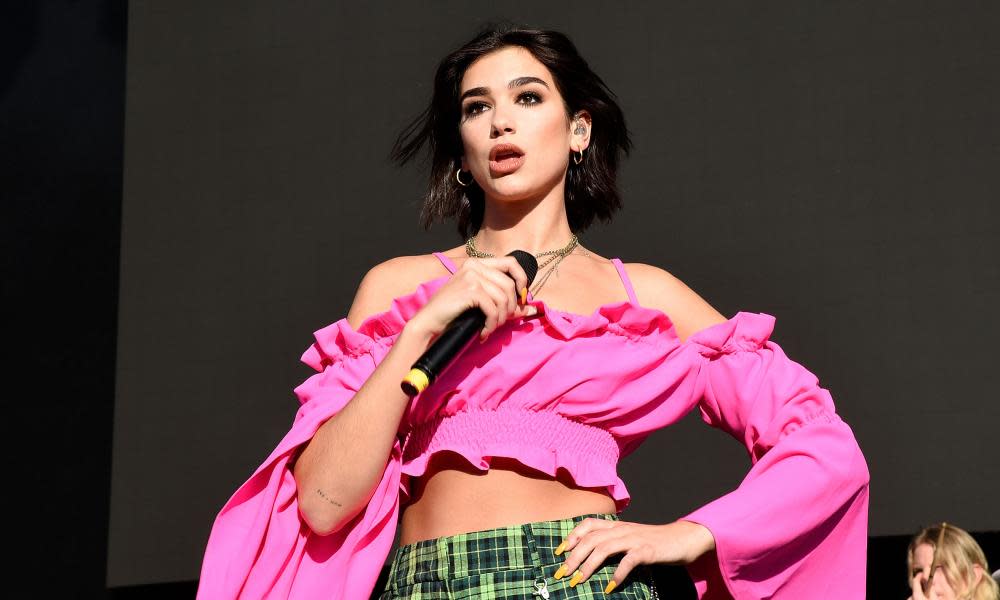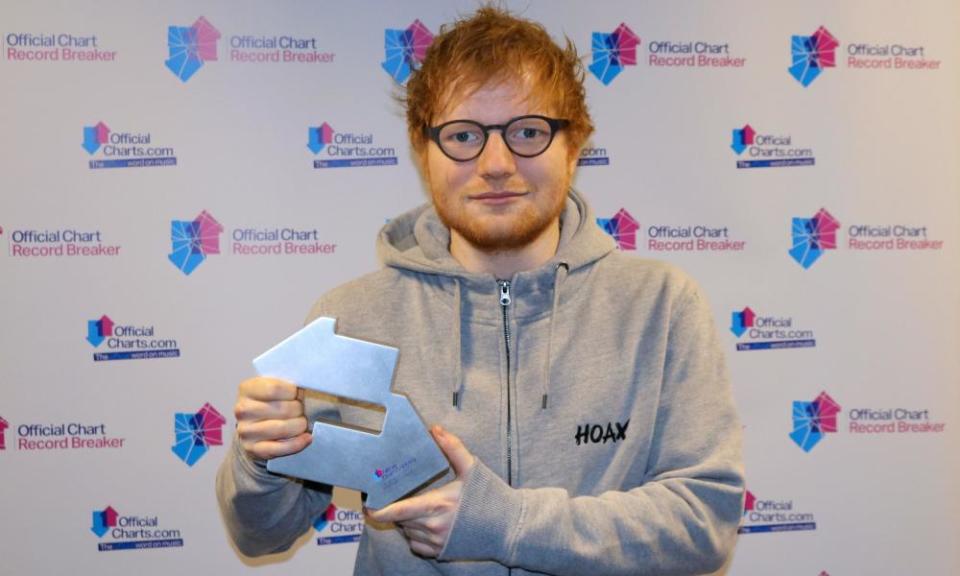UK Top 40 singles chart to include video streaming figures

It has been a long and curious journey for the UK singles chart since Maurice Kinn first rang round a handful of record shops in late 1952 to compile a top 12 of the best-selling new records.
In that time, the charts have grown, with dedicated countdowns covering singles and albums as well as compilations and even genre- and format-specific charts. It has weathered the hype-heavy multi-formatting wars of the 1980s and 1990s, finally bending to digital with the introduction of downloads in 2004. A decade later, streams were added, marking the first time the UK chart measured anything outside of pure sales.
As the market rapidly evolves so too must the chart if it wants to cling to any vestige of relevance: the latest changes will see video streams added for the first time and a new weighting system applied to “premium” streams (those on paid subscription services) and “free” streams (those on ad-supported services like YouTube and the free tier of Spotify).

When streams were first added to the singles chart in 2014, a conversion metric was arrived at where 100 streams would “equal” one sale – as sales were the only thing the chart had been built on. As streaming became the new centre of gravity for the record business, that had to be recalibrated and so, at the start of 2017, it was announced that 150 streams would equal one “sale”. The latest changes, effective from the chart published on 6 July, will see a new metric of 100 premium streams or 600 ad-supported streams equalling one “sale”.
Even though markets like France, Germany, Italy and Spain now exclude ad-supported streams from their charts entirely, the Official Charts Company in the UK felt they had to be included to give a fuller picture of the consumption and popularity of music in its charts.
Free services like YouTube are a significant part of their discovery of music
Martin Talbot, Official Charts Company
“We think it is important to count the free streams as there are people who cannot afford to pay for a subscription or may not have access to credit cards,” says Martin Talbot, chief executive of the OCC. “They could be young kids or teenagers who don’t have credit cards – or it could be low-income families. It could count against certain genres of music if we stripped those out completely.”
Is there a concern that by giving greater weight to paid streams and less weight to free streams that young consumers – the lifeblood of a healthy singles chart and the heaviest users of free streaming platforms – will see their contribution dramatically diluted and the chart become fusty and middle aged?
Talbot argues that this will not be the case, referencing a “shadow” chart the OCC has been quietly running alongside the public chart for the past year to spot and snag anomalies. He claims that the only change is that newer tracks might enter the top 40 a few places higher and older tracks might slip out of the chart a few weeks quicker.
“It’s not like suddenly there will be loads of Led Zeppelin and Rolling Stones in the chart,” he says. “That is not what will happen. Yes, there are young people who use free streaming services; but there are also young people who use video which we haven’t previously been counting. Free services like YouTube are a significant part of their discovery of music so we are including all of that.”

On the video side, this is partly a response to a blurring of the lines between audio and video platforms, with Spotify and Apple Music slowly adding videos, the plays of which had previously not counted towards the chart and which may have been cannibalising the audio streams on those same services.
There are, however, some important category caveats here. Free streams of official videos on YouTube will fall into the 600-streams-equals-one-sale bracket, but streams of videos on YouTube’s new subscription service, on Apple Music or on the paid tier of Spotify will fall into the 100-streams bracket. Plays of UGC (user-generated content) videos – like fan-created lyric videos or lip-sync videos – will not count. This is in part to avoid a repeat of the embarrassingly unfortunate timing of the addition of video streams to the US chart in early 2013 just as the short-lived and meme-centric Harlem Shake was reaching its peak. While the OCC is not ruling out the inclusion of UGC videos in the future, for now they will have no impact on the chart.
It is all a pencil-chewing set of metrics for the average fan to wrap their head around but, for the record industry, it is essentially reverse-engineering the revenue generated by these different types of streams (where a paid stream delivers a higher royalty micropayment than a free stream) and working out the fiscal equivalent of a paid download.
What this may result in is a new marketing focus by labels to push users to the more “valuable” types of streams on paid services. They are unlikely to window key singles on the free and paid tiers of Spotify, for example, but they will be working on ways to push users to take out subscriptions.
The long-term impact for YouTube could be more profound. This could see unofficial videos scrubbed from the service or mounting pressure on the video platform to tweak its algorithms to bump up chart-eligible official videos and downrank chart-ineligible UGC ones in its search results and algorithms.
For the past few years, the industry has been railing against the “value gap” on YouTube where streams there are worth considerably less in monetary terms than those on a service like Spotify. Don’t rule out the new war on YouTube being about the “chart-eligible gap”.

 Yahoo News
Yahoo News 
